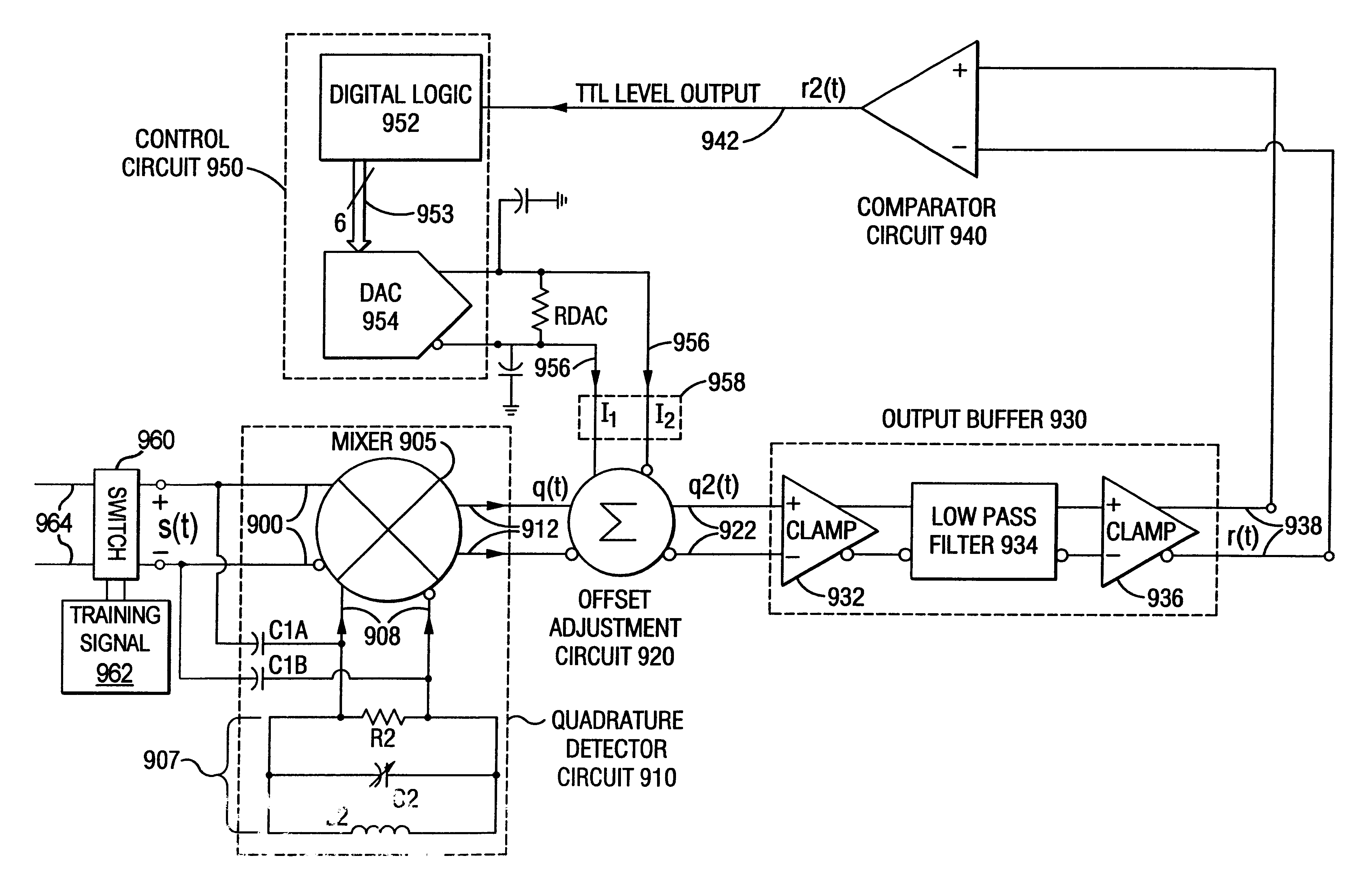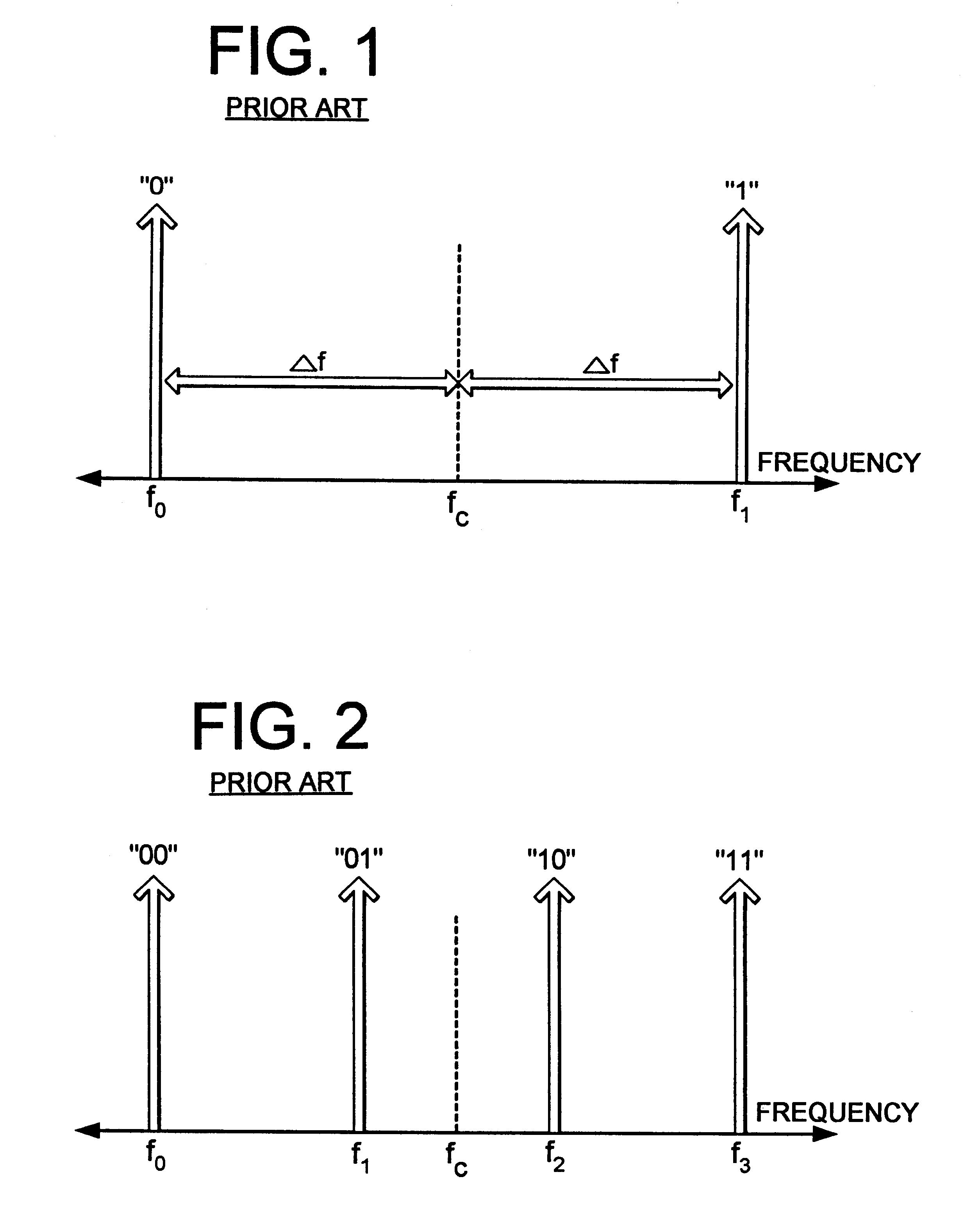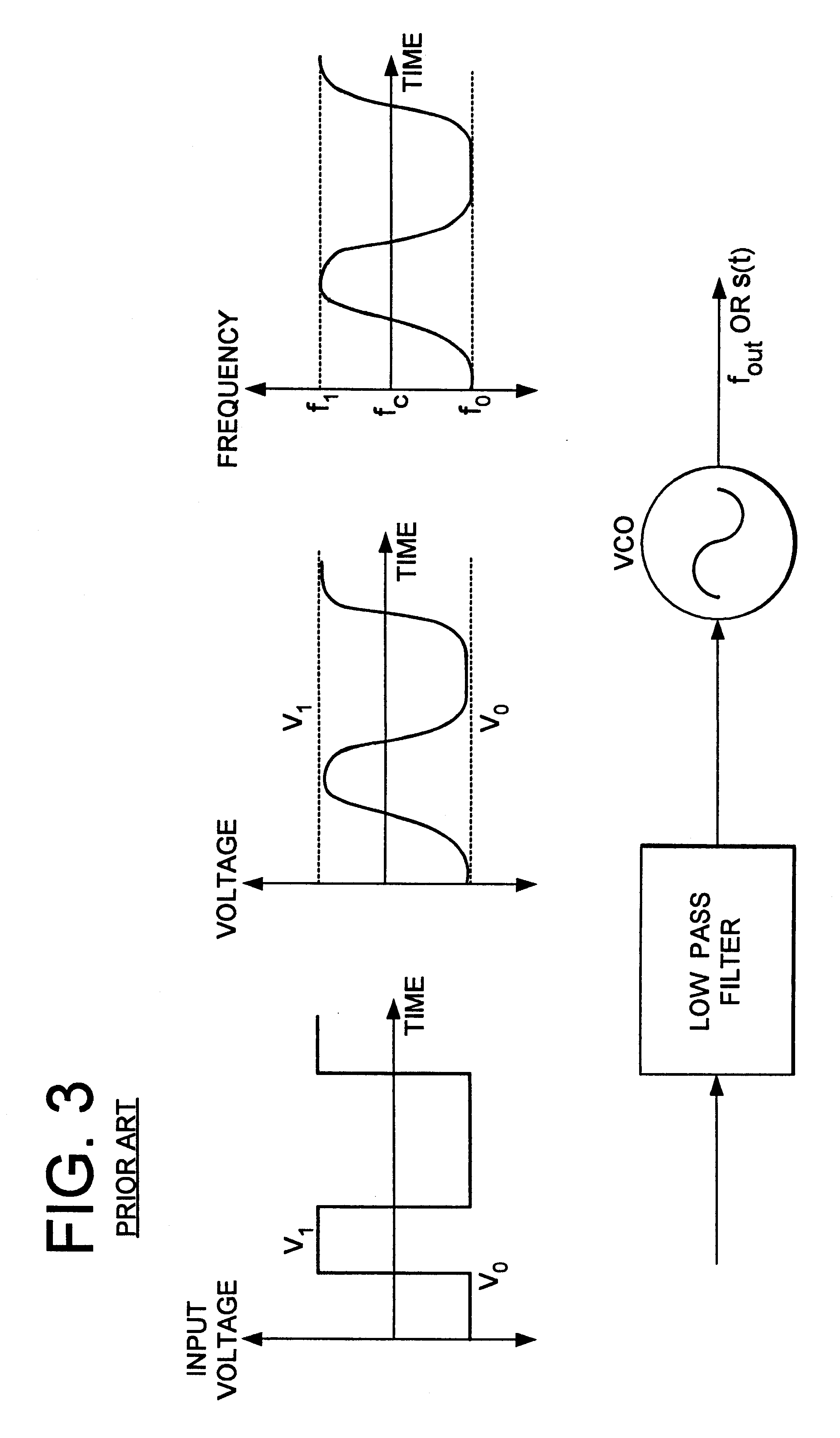Dynamic adjustment to preserve signal-to-noise ratio in a quadrature detector system
a quadrature detector and dynamic adjustment technology, applied in the direction of amplitude demodulation, dc level restoring means or bias distort correction, baseband system details, etc., can solve the problems of less transmitted bandwidth, less modulated carrier use, and the complexity of most radio systems
- Summary
- Abstract
- Description
- Claims
- Application Information
AI Technical Summary
Benefits of technology
Problems solved by technology
Method used
Image
Examples
Embodiment Construction
A detailed description of preferred embodiments is provided with respect to the Figures in which FIGS. 8(a)-(c) illustrate the difference in the effect on the output of a quadrature detector between manually tuning the detector and tuning the detector in the manner of one embodiment of the invention. As opposed to tuning the quadrature detector by moving the output curve 800 along the horizontal (frequency) axis 810 as done in the prior art and shown in FIG. 8(b) by manually tuned output curve 830, the present invention tunes the output of the quadrature detector by moving the output curve 800 along the vertical axis (output voltage) 820 of the output curve 800 as shown in FIG. 8(c) by voltage tuned output curve 840. Note that in tuning the output curve 800 in accord with the present invention the resultant voltage tuned output curve 840 is slightly asymmetrical with respect to the frequency axis 810, whereas the manually tuned output 830 is symmetrical. Thus, in tuning the quadratu...
PUM
 Login to View More
Login to View More Abstract
Description
Claims
Application Information
 Login to View More
Login to View More - R&D
- Intellectual Property
- Life Sciences
- Materials
- Tech Scout
- Unparalleled Data Quality
- Higher Quality Content
- 60% Fewer Hallucinations
Browse by: Latest US Patents, China's latest patents, Technical Efficacy Thesaurus, Application Domain, Technology Topic, Popular Technical Reports.
© 2025 PatSnap. All rights reserved.Legal|Privacy policy|Modern Slavery Act Transparency Statement|Sitemap|About US| Contact US: help@patsnap.com



